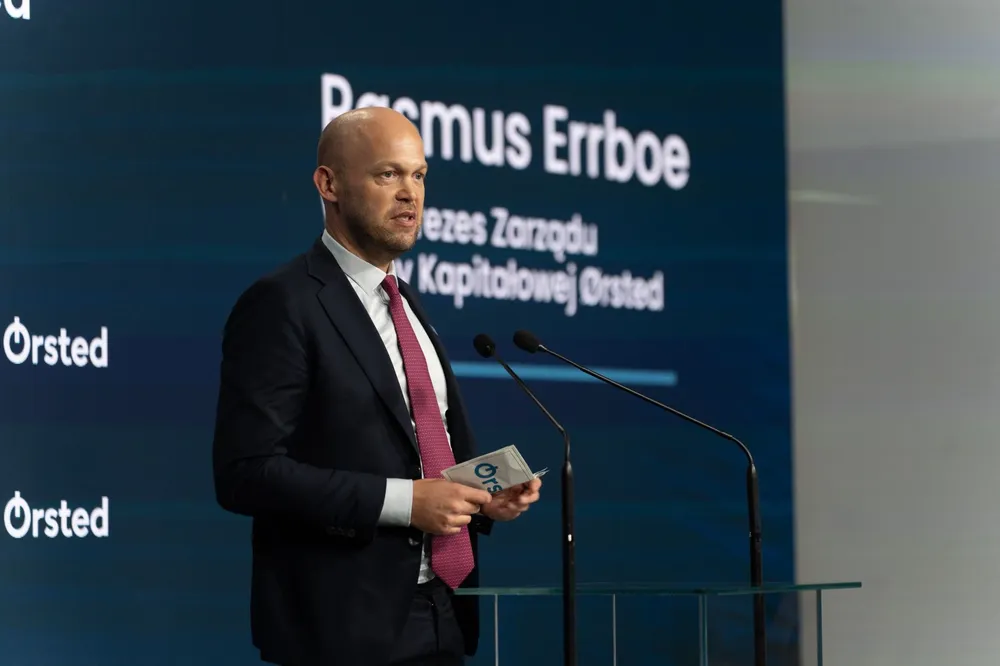Revolution Wind: How much could stop work order cost Orsted and Skyborn?
Weekly cost of stop work order could be comparable to that born by Equinor for its Empire Wind project earlier this year, say analysts

Orsted and Skyborn Renewables will have to shoulder eye-watering sums while their Revolution Wind project is on hold thanks to the Trump Administration’s stop work order, warn analysts, with a “worst-case scenario” that doesn’t bear thinking about.
With the 704MW array off the coast of Connecticut and Rhode Island already 80% complete, Orsted and German co-developer Skyborn might have hoped it would escape a similar fate to Equinor’s Empire Wind.
Breaking down the costs: Vessels, crew and lawyers
Stopping construction of a multi-billion-dollar construction project in its tracks leaves a dizzying array of vessels and equipment sitting idle, along with the hundreds of workers to operate them.
Kristian Ascanius Jacobsen, managing director at Danish renewables consultancy Green Ducklings, says that for a huge US offshore project like Revolution, the cost for things including vessels, marine spread, mariners and port fees could stretch to $15-20m per week.
The order came at a time when 45 of a total 65 Siemens Gamesa turbines have been installed. Jacobsen estimated that a WTIV could cost in the range of $3-4m a week, possibly more.
Revolution Wind has yet to install one of the offshore substations. If installation is done with a vessel like Saipem 7000, currently inbound from Europe to Orsted’s nearby sister project Sunrise Wind, this might allocate an additional cost of $7-10m a week.
Other vessels on site include feeder barges, transport tugs, commissioning support vessels and other support vessels, said Jacobsen. There might also be costs for having helicopters on standby service.
There will be port costs at the operations hub at Quonset in Rhode Island that Orsted is leading work out of, said Jacobsen. Other onshore costs include everything from cranes to cars and lifting equipment.
Staff costs could easily run into $4-6m per week, he said.
Last but not least, Orsted and Skyborn, which were both approached for comment, will now certainly be gearing up for negotiations and a potential legal battle with the Trump Administration. Jacobsen said the costs of retaining counsel to secure “the deal” to get the order lifted could “easily add” $1.5-3m to the pot.
"When large and critical infrastructure projects like this go offshore including a large maritime spread, onshore facilities and hundreds of dedicated people (including the many high paying US jobs), it is set up to be an efficiently running machine in order to keep costs under control," said Jacobsen.
"The Administration throwing a wrench in the engine and the timing of this is by no means a coincidence – but rather a cynical calculated move to inflict maximum damage."
Empire Wind the reference point
Jens Zimmermann, an equity research analyst at Gabelli & Partners in Zurich, said the costs of delaying work for Revolution Wind should be “very similar” to what Equinor incurred at Empire Wind.
Applying the same amount to Revolution Wind, that would mean Orsted and Skyborn would each be facing costs of around $25m weekly.
Jacob Pedersen, head of equity research at Sydbank, said that currently “we do not have any other anchoring points” than the $50m a week that it cost to put Empire Wind on hold.
“Revolution Wind being closer to the finish line would normally entail higher cost,” he said.
“On the other hand,” he said that with Orsted’s Sunrise Wind project nearby, the developer “might actually make use of otherwise idle equipment during the stop work phase… and that would limit the cost.”
In summary, around $50m in weekly cost is “probably not that far off for the whole project,” said Pedersen. “But there is great uncertainty.”
The worst-case scenario
All the above is assuming that following a few weeks or even months of negotiations, Trump is content to lift the stop work order after having shaken some concession out of Orsted, Denmark, Connecticut or Rhode Island. Or all of the above.
But what if the stop work order was not lifted and, for whatever reason, Orsted was not successful in any presumed legal challenge against it? Might the entire cost of the 80% complete multi-billion-dollar project have to be written off?
Pierre-Alexandre Ramondenc, equity research analyst for utilities and renewables at AlphaValue in Paris, said that the latest figures released by Orsted indicated the total capex for Revolution Wind is around DKK 40bn ($6.25bn).
Based on the project being 80% complete, the two developers could each have around DKK 5bn left to spend.
In that “worst-case scenario,” if Orsted and Skyborn were forced to “walk away” from the project, Ramondenc said that what had already been spent would have to be written off.
The remaining capex would “effectively translate into cancellation costs, as the company has already committed spending with suppliers.”
Thankfully for the developers, Ramondenc said that, “considering the scale of investments already made, the millions of hours put in by American workers, and the image the US wants to project to attract new onshore foreign investment, a total shutdown looks counterintuitive.”
“It seems reasonable, therefore, to expect a better outcome.”
(Copyright)